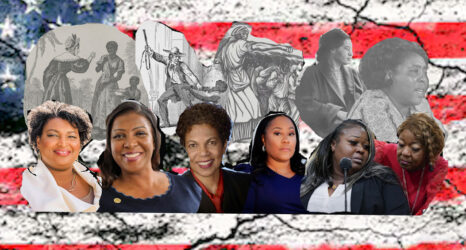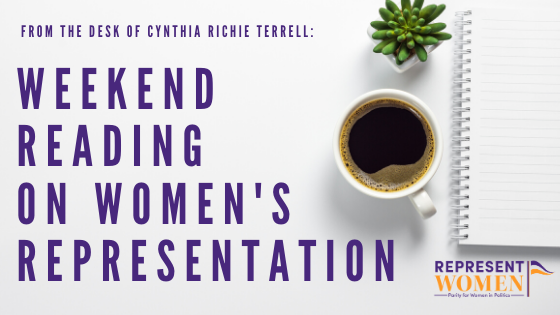
Weekend Reading on Women’s Representation is a compilation of stories about women’s representation in politics, on boards, in sports and entertainment, in judicial offices and in the private sector in the U.S. and around the world—with a little gardening and goodwill mixed in for refreshment!

On the eve of the 2020 general election, the terrific team at RepresentWomen has compiled an updated Gender Parity Index map that tracks women’s representation at the local, state and federal level—combined—so that we can monitor progress toward parity among states and over time. Find out more about the 2020 Gender Parity Index and look for more information about how your state is doing here.
We will be releasing updated numbers after the election, but here is a summary of where things currently stand:
Even if a record number of women win next Tuesday, the U.S. will still fall short of gender parity at the national and state levels and very few states are primed to reach an “A” grade for women’s representation.
The highlights from our 2020 Gender Parity Index include:* New Hampshire reached parity with a score of 50.1. The only state to achieve gender parity, New Hampshire regained its “A” grade after slipping to a “B” in 2019.
* The majority of states—60%—received a “D” grade, with 14% receiving a “C” and 18% receiving a “B.”
* Three states received an “F” grade in 2020, with Montana slipping from a “D” grade in 2019 and joining Utah and Louisiana.
* Women’s elected representation varies drastically by region.The west coast continues to outpace most of the country, with six states receiving “B” grades in 2020.
* Women’s representation remains uneven between political parties, as does the number of women candidates in 2020. Of the 727 women who filed to run in 2020 in state executive and congressional elections, only 39.5% are Republican (287 of 727).
* Even as the number of women elected continues to increase each election cycle, progress is slow and uneven across race, ideology, age, and geography. Until we address the structural and ingrained barriers women face in politics, the United States is unlikely to make substantial and sustained progress toward gender balance in politics.
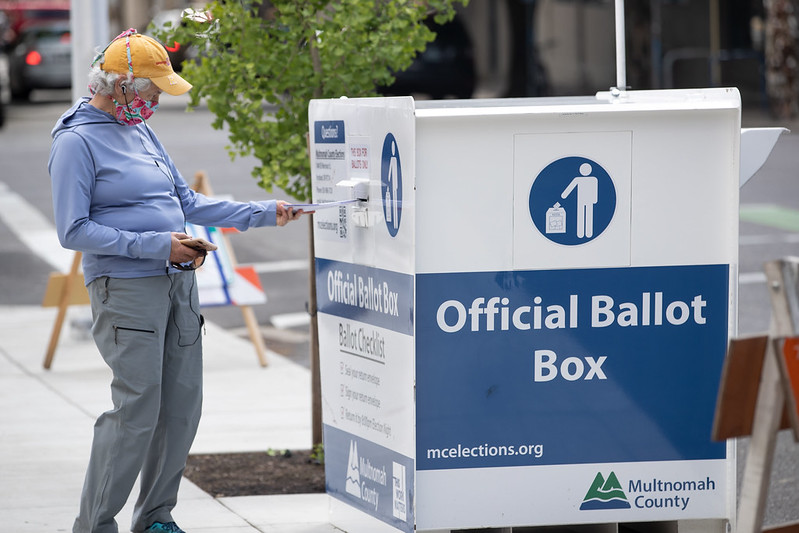
Former U.S. Ambassador to Austria and leading women’s rights advocate Swanee Hunt wrote a powerful piece in The Boston Globe about the burgeoning gender gap and the 2020 election:
In recent days, what has long been seen as a gender gap in American politics has become a gender chasm. With every passing news cycle, President Trump and his alarming allies drive more and more women over the edge — and into the willing arms of the Democratic Party.
An analysis published in February by the Brookings Institution forecast that a seismic shift would soon rock American elections: women turning to the Democratic Party in droves. That’s happening now, and the authors, Morley Winograd and Michael Hais, predict it’s unstoppable.
“If women turn out, [Democratic nominee Joe] Biden wins,” they state, noting that women (versus men) favor him by 1.6 to 1 and more than 2 to 1 among certain interrelated groups, including Black, Latina, college graduates, and suburban women. They characterize Biden’s gains among women as a rejection of the sitting president with unprecedented size and scope. Women have had it with Trump’s mishandling of the coronavirus pandemic, gender disparities, and racial justice. They don’t want him to end the Affordable Care Act. Even on the economy, where Trump leads overall, Biden has an edge among women.
After Hillary Clinton’s 2016 defeat, the global Women’s March was the first surge leftward. Two years later, a political stampede defined the results of the congressional elections. Women voters favored Democrats by almost 20 points, and women winners flipped the House from red to blue.
Fast forward. A recent CNN poll places women’s preference for Biden at an historic two-to-one. It’s virtually impossible, say Winograd and Hais, that Trump (and probably many down-ballot Republicans) can win if women show up and vote….This last stretch is tough. Really tough. But so are the women who are plowing past the traumatic 2016 election to push forward, full force, regardless of the inevitable vagaries of polling data.
We’re witnessing an evolution morph into revolution. Just 11 days after we lost Supreme Court justice Ruth Bader Ginsburg, we said farewell to another iconic voice of feminism.Next month, women will be echoing the words of Helen Reddy: “I am woman, hear me roar, in numbers too big to ignore.”
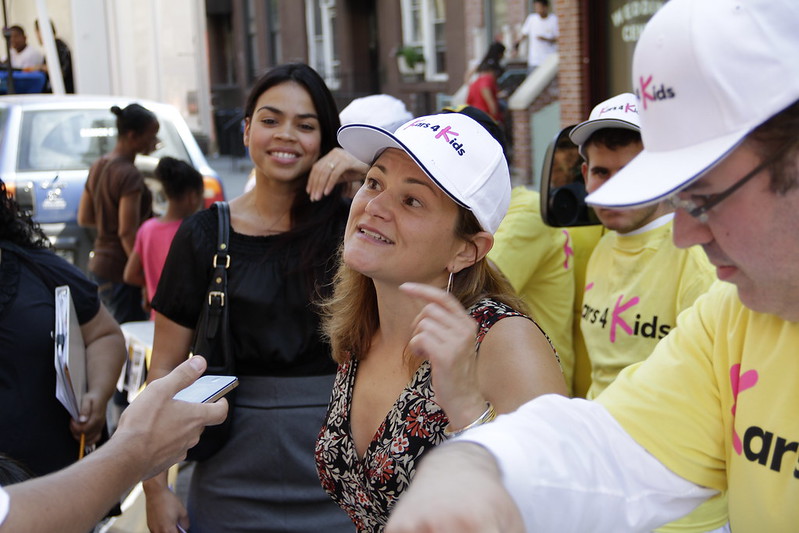
Women organizing strategically to elect more women to office in New York City is a prime example of the power of women working together to chart a more inclusive future that Swanee Hunt describes above. Former New York City Councilmembers Melissa Mark-Viverito and Elizabeth Crowley founded the 21 in ’21 initiative to get more women elected to the NYC Council in 2021.
According to this great story in City and State NY, the effort is going well thanks in part to the use of ranked-choice voting to select the slate of endorsed candidates:
In that vein, ranked-choice voting is key to 21 in ’21’s strategy. The new form of voting is coming to the city next year and allows voters to rank up to five candidates. If someone’s first choice doesn’t win, their second- and third-choice votes can still affect the election. Ranked-choice voting advocates said data from other areas of the country showed this type of voting helped more women and candidates of color get elected, and it promotes positive campaigning based on coalitions, rather than negative campaigning where candidates attack each other. “If we want to get women in all of the open seats, which is the primary objective of this project, then we would also have to make sure all the candidates involved had a ranked-choice voting strategy amongst themselves,” said Heidi Sieck, a board member heavily involved in the project’s ranked-choice voting strategy and training.
Members of 21 in ’21 used ranked-choice voting to determine its endorsements, and included second and third choices in some of the districts where it endorsed. It appeared to be the first major group to roll out ranked endorsements. “I think that because of the collegial network that was formed … (it) is just right for a type of ranked-choice voting (style of) campaigning for the women candidates,” Adams said. “I think this really does provide an opportunity to get more women into office.” Buckner expressed a similar sentiment for the candidates receiving support from 21 in ’21. “You will have to work together,” she said. “You can’t look at it as your opponent, you have to look at it as the woman who you’re going to work together with.”Sieck added that every endorsed woman committed to utilizing a ranked-choice voting strategy as part of the process, and 21 in ’2Jennifer Gutierrez cred Juan Mayancela.jpg Jennifer Gutiérrez ( Juan Mayancela )1 is providing training on how best to campaign in the new framework. She said ranked-choice voting fit perfectly with the initiative’s goal by allowing it to support as many women as possible and make it easier for women to support other candidates, even within their own districts. “The general premise of 21 in ’21 is to help these women candidates navigate not only their own elections but the ranked-choice voting situation so we can be prioritizing women candidates in each and every one of these races,” Sieck said.
In terms of building coalitions for ranked-choice voting, Shimamura said she knows many of the other candidates in her race, including the two other candidates co-endorsed by 21 in ’21. In fact, those women have signed Shimamura’s pledge to take on the city’s maternal mortality crisis – women of color have been dying during or as a result of childbirth at disproportionately high rates. The issue is personal for Shimamura, who had a high-risk pregnancy that resulted in potentially life-threatening complications while she was giving birth. “Of course, everybody’s going to be for ending the maternal mortality crisis, this is a question of who’s going to actually prioritize it,” Shimamura said of the need for more women in government. “And the people who prioritize it are the people who actually deeply understand just how vulnerable and just how much we’re failing our families.” She said thanks to ranked-choice voting, she knows she can work with the other women in her race to ensure issues like that will be championed in the City Council.
Other candidates like Hudson, Gutiérrez and Farías all expressed similar excitement about the prospect of ranked-choice voting. Gutiérrez added that 21 in ’21 helped connect her with other female candidates from across the city to form a coalition of people committed to the same issues that could carry over into working relationships as fellow council members. One of those people was Hudson, with whom she co-published an op-ed over the summer along with five other female candidates on the need for police reform. “It definitely does feel achievable now to have 21 (women), at least 21, in 2021,” said Hudson, who thought the goal seemed daunting in 2017. “And that’s really exciting.”
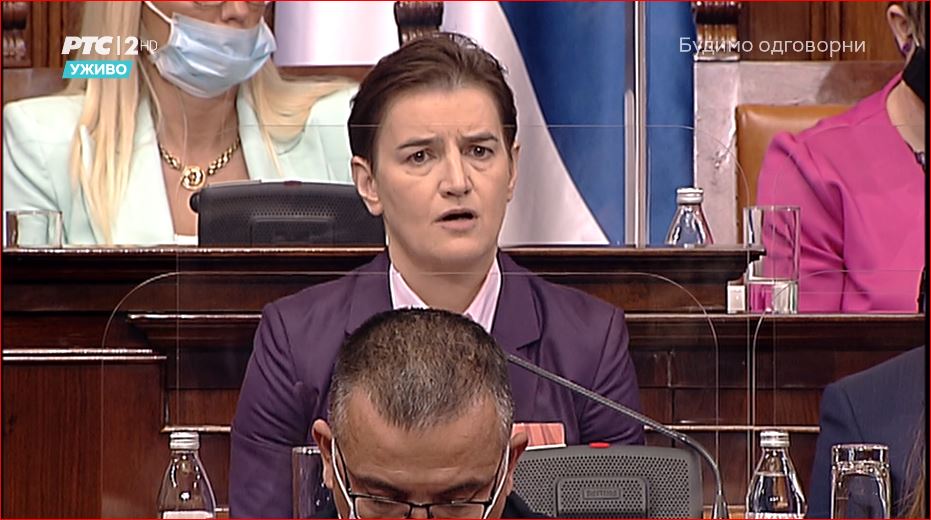
I was especially glad to read the news about the new government in Serbia because I was there a year ago with super allies Amanda Ellis and Marianne Dutkiewicz at the Inter-Parliamentary Union summit where we met with parliamentarians from around the globe to discuss strategies to meet the UN’s goals around women’s representation and equality.
According to this story on Bloomberg News by Misha Savic, the newly formed cabinet is gender-balanced and catapults Serbia into a small group of nations to have reached this milestone:
Serbia’s proposed new-look government is among the world’s most gender balanced, with women named to half of ministerial posts.
The lineup, announced Sunday, propels the Balkan country to the brink of the global top 10 for gender equality — an issue that has typically been higher on the agenda of western European countries. Still, critics say that even with the appointments, President Aleksandar Vucic will call all the shots and women remain under-represented in local politics.
Serbia was already something of an outlier.
Vucic selected openly gay Ana Brnabic as the country’s first female prime minister in 2017. The post of parliament speaker was also held by a woman, just as was the central bank, led by Governor Jorgovanka Tabakovic. Almost two-fifths of the legislature’s 250 seats are held by women, nearing a representation target set before the June general election.
After a resounding victory in that vote, Vucic called for a “revolutionary” change as he announced Brnabic’s re-appointment.
“Thus we’d represent our country in the best possible way and show, not in words but with action, how gender equality works in practice,” he said.
Brnabic raised the proportion of women in the government up from a fifth. Some of the new arrivals include women leading ministries for economy, justice, energy and mining, environmental protection, labor, culture and human rights. Parliament is expected to approve the cabinet in the coming week.

In other international news, more women are running for parliament in Egypt than in any previous election according to a story on Ahram Online by Reem Leila. Egypt currently ranks 138th among nations for women’s representation:
When women gained their political rights in 1956, they probably could not have dared imagine how far they would get. But they would progress markedly as attested by their current representation in parliament. Females are running for 25 per cent of the new parliament seats, a historic high for the country, compared to 14.9 per cent in the last parliamentarian vote.
Currently, out of more than 4,000 candidates for parliament elections, 347 women are running. A total of 303 women are competing for independent seats; the remaining 44 are on the electoral lists of parties.
According to Isis Mahmoud, head of the National Council for Women’s (NCW) training department, only 19 parties from among 36 have listed women on their electoral list. “The average of women’s representation on these lists is 53 per cent. Governorates such as North and South Sinai along with the New Valley did not nominate females for the elections,” Mahmoud said.
Women’s representation in the parliament of 2010 was 12.7 per cent. Representation dropped significantly in the 2012 parliamentary elections, hovering at around two per cent, less than their representation in 1975.
“The current percentage of women’s representation in parliament is very reassuring compared to the previous two sessions when the number of seats occupied by women could have been counted on one hand. I hope that 50 per cent of the members appointed by the president will be women, as stipulated in the 2014 constitution, in order to guarantee gender equality,” Mahmoud said.
Although Article 11 of the 2014 constitution stipulates that the state shall ensure equality between women and men in all civil, political, economic, social and cultural spheres, women find difficulty in winning independent seats in parliamentarian elections.
According to Mahmoud, women have better chances when included on parties’ lists. “Electoral constituencies are vastly different than before. Women on their own cannot succeed except in very few places.”
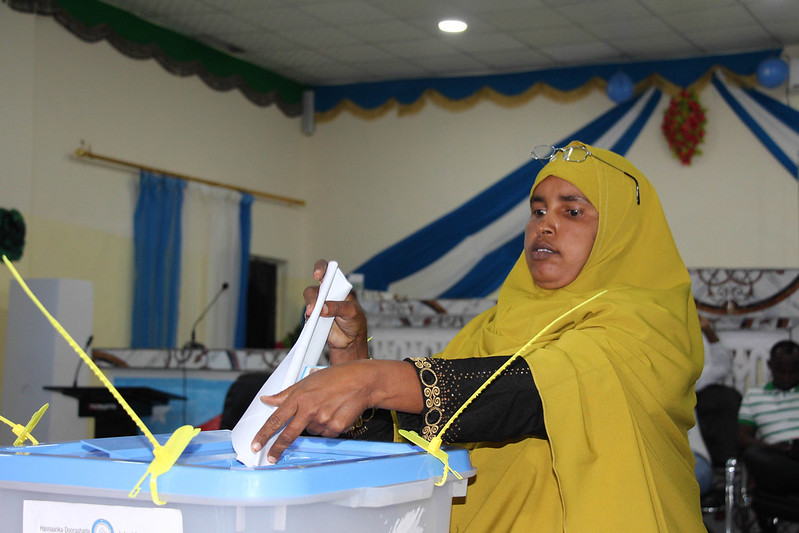
Elections are scheduled for early 2021 in Somalia which now ranks 83rd for the percentage of women elected to parliament—the United States ranks 87th.
According to this story on Reuters by Nita Bhalla and Mohammed Omer there is a growing call for a 30 percent quota for women in Parliament:
Women’s rights groups, prominent businesswomen and female politicians in Somalia are urging the country’s male-dominated parliament to pass a bill reserving 30% of seats for women in next year’s general election.
Women hold 24% of the 329 seats in Somalia’s lower and upper houses of parliament, according to the Inter-Parliamentary Union (IPU), up from 14% in the previous election.
In June, Somalia’s lower house approved a bill allowing for 30% of parliamentary seats to be reserved for women, but the bill has not been tabled before the upper house for approval.
President Mohamed Abdullahi Mohamed did sign an agreement on with regional leaders in September which included the 30% quota – but women’s rights campaigners said this was not good enough.
“We want this commitment on reserving 30% seats for women to be passed as legislation,” said Deqa Abdiqasim Salad, CEO of Hear Women, a charity working to strengthen the political voice of women in Somalia.
“We are happy to have achieved 24% in the current parliament, but legislation is necessary to ensure that we do not lose the seats we have and help strengthen democracy by providing for a more representative voice in policy-making.”
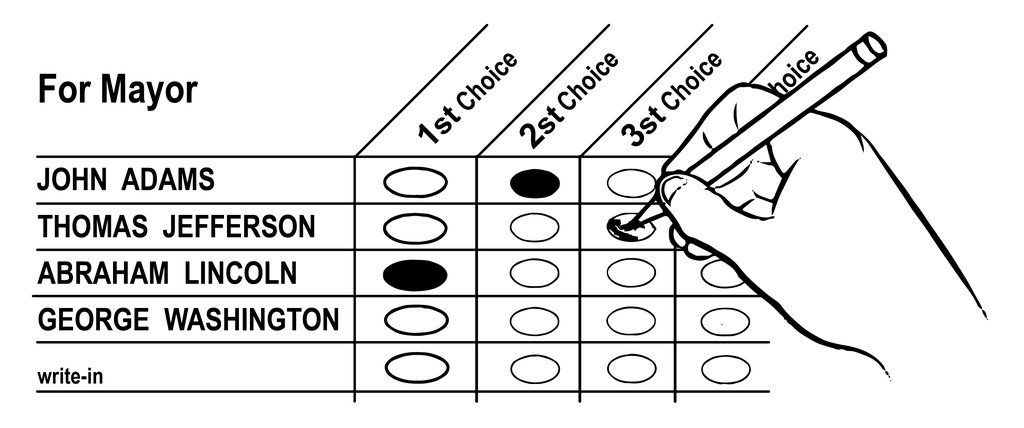
Boston University student Abbigale Shi had a great piece on the ranked-choice voting ballot measure in Massachusetts:
Ranked-choice voting is an evaluative voting process that allows voters to rank candidates in order of preference. Let me explain.
Say you’re planning a party with friends and you have a choice between five different snacks: chips, popcorn, goldfish, fruit or a cheese board.
If you’re bougie like me, you would choose a cheese board as your first choice. But, just in case, you’re given the option to vote for others. I really don’t want fruit, so I vote chips as my second choice and popcorn as my third.
If other people don’t vote for cheese as their first choice — maybe they’re lactose intolerant — and it only gets my vote, then it will be eliminated. My vote will then be added to the vote for chips. This process continues. Candidates with the least support are eliminated, and votes are redistributed until one candidate receives a majority vote.
The existing system, plurality voting, limits voters to only one choice. Ranked-choice voting is versatile — if you wanted to select only one candidate, you have the option to do so as well.
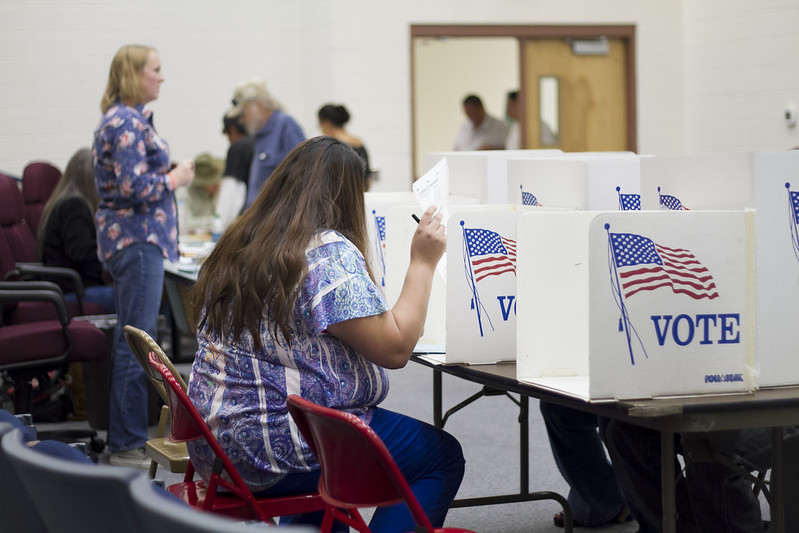
I was glad to find this gem of an article about the need for more women in office in the Jackson Hole News and Guide that features comments from RepresentWomen allies county commissioner Natalia Macker and Jen Simon, founder of the Wyoming Women’s Action Network:
One hundred years ago the town of Jackson elected an all-woman Town Council.
A hundred years later, at a time when women’s voices and experiences are particularly essential — a worldwide pandemic that has kept so many children’s caregivers at home, with few systemic safeguards or backstops in place for those caregivers who may have been holding full- or part-time jobs — just two women sit among the 10 people elected to the Jackson Town Council and the Teton County Board of County Commissioners.
Councilor Hailey Morton Levinson is the lone woman on the council. Commissioner Natalia Macker is the lone woman on the county’s Board of Commissioners.
The reasons Jackson Hole seems to have taken a step backward when it comes to diversity in its elected bodies aren’t clear, but it’s a systemic problem that needs to change, and fast, say some of the valley’s civic leaders.
“We need to look at the fact that just a few years ago, we had greater representation among the five town councilors and the five county commissioners,” said Jen Simon, founder of the Wyoming Women’s Action Network. “Right now only two of the 10 are women, and it’s really important that we make sure that we have women’s voices represented on our elected bodies.
“Especially when we are still in the midst of a pandemic which has laid bare some of our real structural challenges. Those are really a whole series of types of inequalities and a whole series of policies that don’t include sufficient child care support for families and support for working women, in particular.”
Simon said those types of issues “are best addressed by having more women’s voices in elected office.”…
“The reason you would want to have more gender parity is, I think, government works best when it reflects the population,” Morton Levinson said. “And, obviously, it doesn’t right now on really any level in the sense of minorities or women or, really, anything other than white men.”
Town Councilor Arne Jorgensen, speaking generally and not openly advocating for any one specific woman currently running for town or county elected positions, agreed with Morton Levinson’s assertion that government functions best when all of its constituent groups are represented.
“I feel it’s very important, and it’s not just a gender question,” Jorgensen said. “It also addresses life experience, cultures, genders. We need to do better than we’ve been doing.”
The numbers bear out what Simon and others decry: Women are underrepresented on elected bodies, not only in Jackson Hole but across the state and across the country. About 15% of the state Legislature’s members are women, though women make up 49% of the state’s population. That number is only slightly better at the county commissioner level, with 18% — 17 of 93 electeds — being female.
So what’s the fix?
There are at least a couple of realistic options, according to Simon, Chambers and national nonprofit RepresentWomen, which seeks to help women gain gender parity in elected office across the country.
One of those options is quota systems. The state of Iowa and the city of Los Angeles, for example, have implemented gender quotas in their appointed offices.
“It is a structural issue, it is a systemic issue, it is something that I think we need to look at addressing,” Simon said in a recent interview.
One potential way to address it, Morton Levinson suggested, would be to have women appointed to various boards, committees and commissions with the town and county to gain experience within government, then to run for elected office, essentially climbing their way up the ladder.
While it’s certainly a reasonable process, Morton Levinson acknowledged that men, white men in particular, often don’t have to follow that blueprint and can skip that step.

There was a clever letter to the editor of the Salem, Mass., newspaper in response to their editorial on ranked choice voting:
To the editor:
I began your paper’s Oct. 28 editorial, “Our view: Vote no on Question 2,” with great interest, before losing track of what I was reading and staring at a butterfly outside of my window for 10 minutes and then trying to use a salad spinner to make hard boiled eggs. You see, I am one of the many voters who would just be too darn confused for ranked choice voting, and it was validating to see my perspective represented in your paper.
I admit, I was a little concerned when you took two whole paragraphs to explain ranked choice voting in simple, easy-to-understand language. I was afraid the entire thing was a ‘bait-and-switch,’ which I think may be a hockey term of some kind. If even an editorial opposing Question 2 can cogently explain ranking preferred candidates in order, what hope did I have that others would remain as perpetually confused as I?
I was so nervous I had to calm myself with a quick trip to the grocery store, where I looked at a shelf of jelly. They had strawberry, raspberry, and grape. Strawberry is my favorite, raspberry is my second choice, and I don’t like grape. I had enough money for two jars of jelly. In hopeless confusion, I bought the grape, and now my sandwich is sad, but my brain is happy, because your editorial reminded me that the rest of Massachusetts would have been equally dismayed by my dilemma.
After all, ranked choice voting is an esoteric, unfamiliar phenomenon, practiced by those learned democratic sages in (checks notes) Maine. There’s simply no call to assume that Massachusetts would be able to implement the same kind of political wisdom as Maine.
All we have going for us are several of the world’s most prestigious universities, a public school system that is the envy of the nation, a robust civic tradition that includes open town meetings, and industry-leading nonpartisan news networks. Maine has the World’s Largest Nonstick Frying Pan. Game, set, and…I think it’s a basket? Home run? Football is so confusing to me.
On top of this, you also correctly intuited that ranked choice voting would be unnecessary. I couldn’t agree more. What if, just as a hypothetical example, voters were someday presented with a slate of candidates that included a rip-roaring socialist firebrand, a whip-smart Midwestern mayor who was also a veteran with an adorable husband, a good-hearted avuncular pragmatist who loves ice cream and the Rust Belt, a brilliant dynamo with a plan for literally everything, and a badass prosecutor whose withering Senate testimony was almost as awesome as her sneaker collection? I can’t think of anything more unnecessary than having some method of (ugh) ranking them according to my preference.
In short, I want to thank The Salem News for doing its bit to save readers from the headache of being able to vote in a manner that more precisely aligns with their preferences and values. That is not what democracy is all about.
—Sarah Thomas, Salem
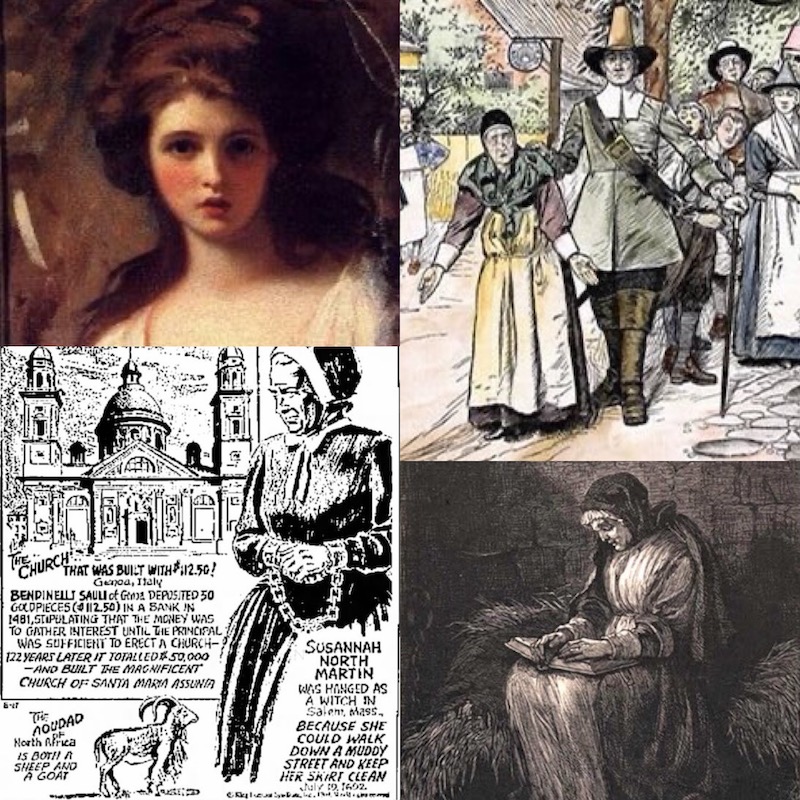
My husband’s great-great-great-great-great-great-great-great-great (that’s nine!) grandmother, Susannah North Martin, also from Salem, Massachusetts, was hanged for witchcraft on July 19, 1692 after being accused of walking down a muddy street and staying clean.
On the one hand this seems like an outdated, ridiculous, desperate accusation made by men who were threatened by an older, sharp-tongued widow who owned property—but on the other hand the response to powerful women feels a tad familiar. I think of Susannah often but especially on Halloween when witches are about.
Check out RepresentWomen’s must-read feminist thrillers:
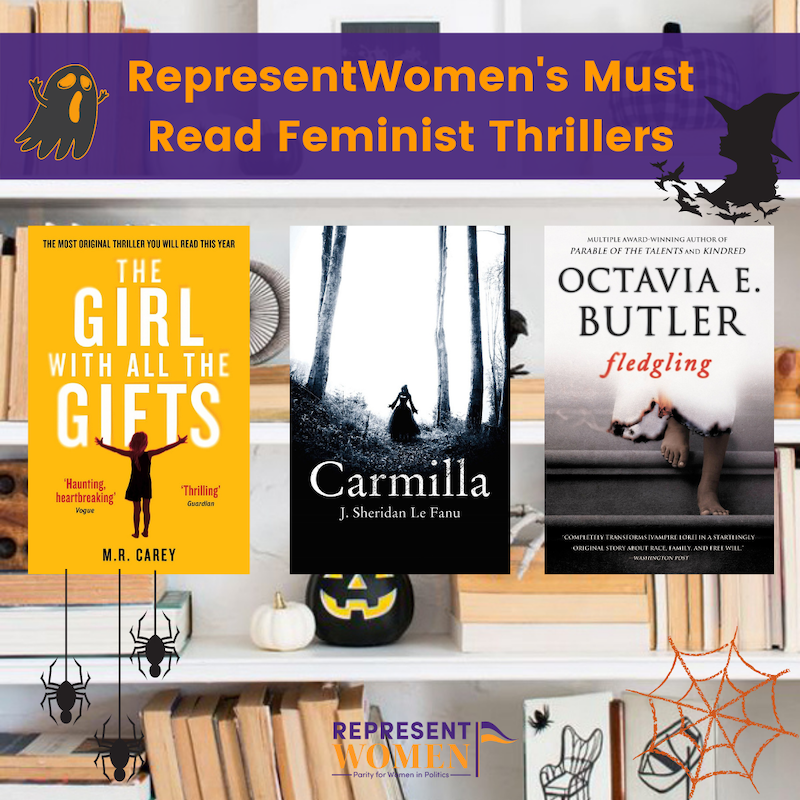

That’s all for this week. I trust readers in the United States have made their plan to vote already and are probably ready, along with readers outside our borders, for this election to be over! No matter what the results are, we have a lot of work to do to build a more perfect union.





